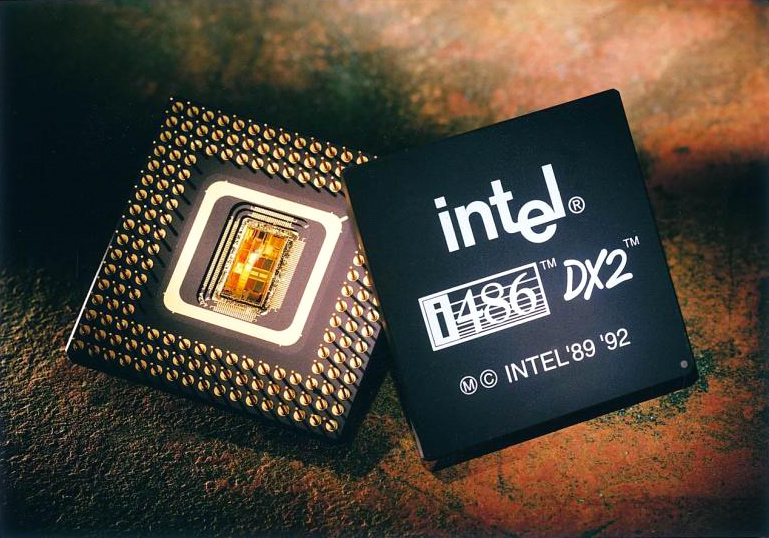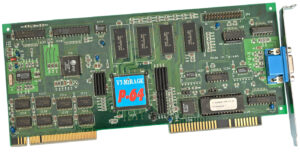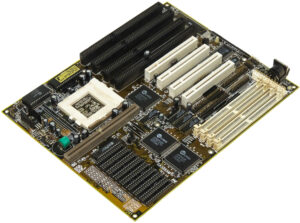Introduction
486 CPU Era – the birth of Overclocking – this is how I decided to call everything that was in the pre-Pentium era, which I did not find and become familiar with until a couple of months ago.

(Another Article in cooperation with max1024 of Belarus – Edited/Expanded by Me)
 If we abstract from the very first Pentiums, which appeared using Socket 4 in two speeds of 60 and 66 MHz, then these processors won popular fame and love in motherboards based on Socket 5 and 7. Such machines could be seen in the early 90s on which while playing C&C, Warcraft and other RTS games. The Sega Mega Drive II and Super Nintendo game consoles competed with expensive computers. Moreover, the consoles were far ahead in popularity (and to be honest, the graphics and game play were better) and I got used to the joystick much earlier than to the mouse and keyboard.
If we abstract from the very first Pentiums, which appeared using Socket 4 in two speeds of 60 and 66 MHz, then these processors won popular fame and love in motherboards based on Socket 5 and 7. Such machines could be seen in the early 90s on which while playing C&C, Warcraft and other RTS games. The Sega Mega Drive II and Super Nintendo game consoles competed with expensive computers. Moreover, the consoles were far ahead in popularity (and to be honest, the graphics and game play were better) and I got used to the joystick much earlier than to the mouse and keyboard.
The question arises, what was there before all these Pentiums? And the answer, if you dig deeper, can discourage or even confuse any inveterate computer enthusiast, since the cultural layer of “hardware” from the very first processor belonging to the x86 architecture to the first representatives of the superscalar architecture is much larger than from the Pentium 4 to the freshly released Intel Core i9-11900K, which belongs to the Rocket Lake family of 11th generation Intel Core processors. It is not so easy to digest this entire historical layer, so I have outlined the framework for myself.
 To simplify the chosen concept, I decided that the platform should in any case support the PCI interface, since it is, firstly, relatively fashionable and “modern” and, secondly, gives more room for my experiments with the accumulated PCI expansion cards. I did not impose other, special requirements on the test platform, except that according to the established tradition, it should be the most powerful and fastest set that is possible to assemble.
To simplify the chosen concept, I decided that the platform should in any case support the PCI interface, since it is, firstly, relatively fashionable and “modern” and, secondly, gives more room for my experiments with the accumulated PCI expansion cards. I did not impose other, special requirements on the test platform, except that according to the established tradition, it should be the most powerful and fastest set that is possible to assemble.
Here I think some of the readers of this article the “True oldies” will say: “what is this nonsense, where is the ISA, VLB and 8-bit only?”, But everything has its time, we will gradually dive into the depths of the prehistoric hardware sea, otherwise decompression cannot be avoided. [Editor’s note, I grew up on an 8-bit 8088 and of course connected the PC Speaker to a 100 Watt Stereo Amp, the loudest 8-bit beeps ever]

typical VLB videocard – V7 Mirage P64 on S3 Vision 864, 2 Mb (before they hid all the good stuff with a heatsink)
So, let’s play from the presence of the PCI bus, which appeared just during the heyday of 4th generation processors, “fours” or simply – four hundred and eighty-sixths, which first appeared back in 1989 or today it is 32 years ago. “Almost like yesterday” the oldies will say, “We were not born yet,” the rest will answer, although this is not the point.
 The previous generation of 386 processors was content to exchange data with peripheral devices more often at the “width” of 8 and 16 bits, although the entire generation of processors belongs to the first microprocessor architecture supporting 32 bits, but despite this, motherboards designed for them had no 32-bit PCI bus. Although this could not have happened historically, since the specification is new, in relation to the previous buses, it (PCI) was first implemented in 1992. This means that the whole choice comes down to the whole variety of 486 processors, and there was enough variety in those years, not that today there is a choice between “red” and “blue”.
The previous generation of 386 processors was content to exchange data with peripheral devices more often at the “width” of 8 and 16 bits, although the entire generation of processors belongs to the first microprocessor architecture supporting 32 bits, but despite this, motherboards designed for them had no 32-bit PCI bus. Although this could not have happened historically, since the specification is new, in relation to the previous buses, it (PCI) was first implemented in 1992. This means that the whole choice comes down to the whole variety of 486 processors, and there was enough variety in those years, not that today there is a choice between “red” and “blue”.
Read More »







